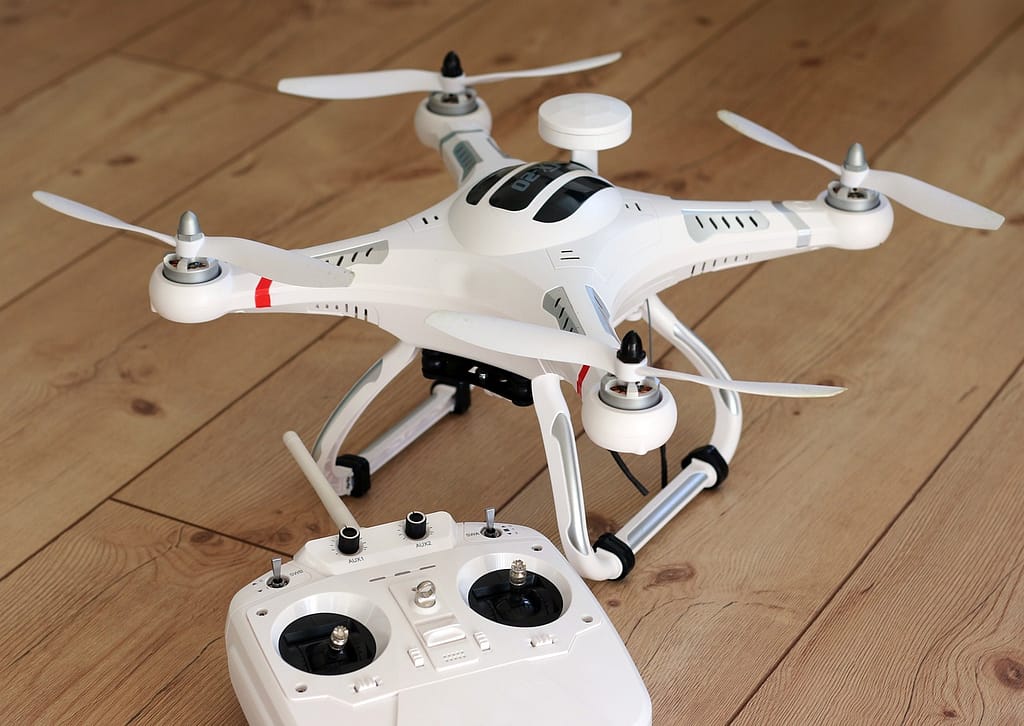Introduction to Drones
Drones, those buzzing marvels in the sky, have come a long way from their humble beginnings. Picture this – it’s not just a toy or a mysterious device; it’s a piece of technology that’s changing the game!

Drones, also known as unmanned aerial vehicles (UAVs), are versatile aircraft that can be remotely controlled or autonomously programmed to perform various tasks. They come in different sizes and types, such as multirotor drones, fixed-wing drones, and hybrid drones, each suited for specific applications like photography, education, agriculture, and more
“Now, let’s lift the curtain and explore the enchanting world of drones.”
Types of Drones
In the vast drone kingdom, we have different species. There are those sleek consumer drones, the heavy-duty commercial ones, and the cool, high-tech military drones. It’s like choosing between a sports car, a delivery truck, and a superhero gadget.
- Multi-Rotor Drones:
- Description: These drones have multiple rotors and propellers for vertical takeoff and landing.
- Features: Offer better control in the sky due to multiple rotors, commonly with four, six, or eight rotors.
- Applications: Ideal for tasks like aerial photography, videography, mapping, surveying, inspections, and short-range product delivery12.
- Fixed-Wing Drones:
- Description: Fixed-wing drones have a single long wing on each side and require a runway or catapult for takeoff.
- Features: More efficient than multi-rotor drones, suitable for long-range flights and operations.
- Applications: Used for tasks like aerial mapping, surveying, asset inspection, long-range payload delivery, and unmanned aerial refueling12.
- Single-Rotor Helicopter Drones:
- Fixed-Wing Hybrid VTOL Drones:
- Description: Combines features of fixed-wing drones with vertical takeoff and landing capabilities.
- Features: Offers the advantages of both fixed-wing and rotor-based drones for versatility in flight modes.
- Applications: Suitable for tasks like aerial photography, mapping, surveying, long-distance flying, and commercial drone use
“Think of them as the Avengers of the sky, each with its own superpowers!”
If you want to know detailed history on drones click here.
Components and Features
Ever wondered what makes drones tick? From propellers doing the aerial tango to cameras capturing the world from above, these flying robots have some cool components. It’s like a robot dance party, but in the sky!
Below is the list of some common components used in drones:
- Motors, mostly bldc motors
- Propellers
- ESC (Electronic Speed Controller): For controlling the motors
- Flight Controller: Brain of the drone
- GPS Module: For navigation
- Telemetry Module
- Obstacle Detection Module
- Gyroscope
- FPV Accessories
“If drones were superheroes, their capes would be made of propellers!”
Applications
Drones aren’t just for the tech-savvy. They’re everyday heroes too! From capturing breathtaking family moments to delivering packages faster than a pizza on a skateboard, drones are here to make life more exciting.
Different applications of drones are:
- Military use
- Agriculture
- Search and Rescue
- Delivery
- Mapping land
- Surveillances
- Videography and Photography
“Imagine a drone delivering your homework faster than you can say ‘science is cool!'”
Pros and Cons
Like any superhero, drones have their strengths and weaknesses. On the bright side, they can zip around, explore the unknown, and save the day. But, just like Superman has kryptonite, drones have their challenges too.
Pros:
- Environmentally Friendly: Drones are battery-powered, reducing fuel consumption.
- Cost-Effective: They can lead to cost savings over time, offering a return on investment.
- Always Operational: Drones do not require breaks or rest, ensuring continuous operation.
- Improved Access: They can reach difficult or dangerous locations more efficiently than humans.
- Reduced Risk: Drones can perform hazardous tasks, minimizing risks to human safety.
- Quality Aerial Imaging: Equipped with high-resolution cameras, drones provide detailed aerial photographs and data.
- Precision: Utilizing GPS technology, drones can be precisely guided to specific locations for various tasks like agriculture and inspections.
- Security: Drones enhance safety and surveillance in private organizations and disaster response efforts.
- Minimizes Danger: Drones replace risky tasks for humans in inspections of tall structures and hazardous areas.
- Flexibility for Quick Inspections: Drones offer quick and customizable inspection solutions for various industries.
Cons:
- Limited Capabilities: Drones lack human-like thinking and communication abilities.
- Legal Limitations: Restrictions on where drones can be flown due to regulations and privacy concerns.
- Safety Concerns: Potential distractions or dangers posed by drones to people and wildlife.
- Training Requirement: Skilled operators are needed to effectively operate drones.
- Expensive Initial Outlay: High upfront costs depending on the type of drone required.
- Potential for Misuse: Like any technology, drones can be exploited for nefarious purposes such as invasion of privacy or smuggling contraband.
- Noise Pollution: Larger drones can be noisy, causing disturbances in residential areas and wildlife habitats.
- Limited Payload Capacity: Drones have weight restrictions, limiting their ability to carry heavy items for delivery purposes.
- Technical Failures: Possibility of technical malfunctions leading to crashes or damage.
- Learning Curve: Some drones require a learning curve, making them less accessible to inexperienced users.
“Even drones have their ‘Uh-oh, I didn’t see that tree!’ moments.”
Future Trends
Hold on to your propellers because the future of drones is mind-blowing! From drones that can talk to each other to those with invisibility cloaks (okay, maybe not that far), the drone saga is far from over.
“Buckle up, folks! The drone revolution is just getting started!”
